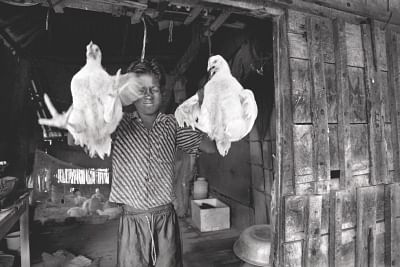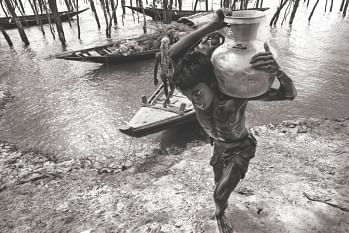|
Inside
Letters
Voicebox
Chintito
Cover Story
International
Special Feature
Anniversary
In Retrospect
One Off
Photo Feature
Perceptions
Perspective
Obituary
Straight Talk
Education
Travel
Tribute
Impressions
Star Diary
Cartoon
Neighbours
Postscript
SWM Home
|
Photo Feature
Salt
Mohammad Rakibul Hasan
Salt is an essential ingredient for every life. But if the level of salt increases, the ecosystem can break down. Climate change causes salinity around coastal areas of Bangladesh. Every year cyclones, tidal floods and drought hit its' territory. Because of soil salinity, no crops can grow, no drinking water is left. People living around coastlines are mostly poor, the common profession being fishing. Food is scarce and health is poor. To adapt to climate change, an exodus has begun. Many people have moved to Dhaka, Khulna and Chittagong even India by trespassing the border at Bay of Bengal. The face of climate change is sadistic. A study says that “the number of environmental refugees will reach at 20 million in Bangladesh by 2050. If the sea level rises just a metre, 20 percent areas will be drowned.”
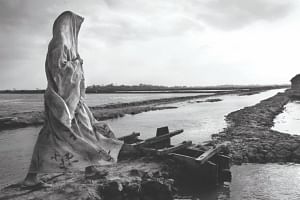 |
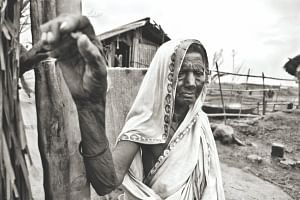 |
A woman passes a shrimp farm. |
A widow who survived the last two major cyclones Sidr and Aila that hit the coastal belt of Bangladesh. |
 |
The number of dropouts from coastal schools is high because children are needed to collect safe drinking water from distant places every day. |
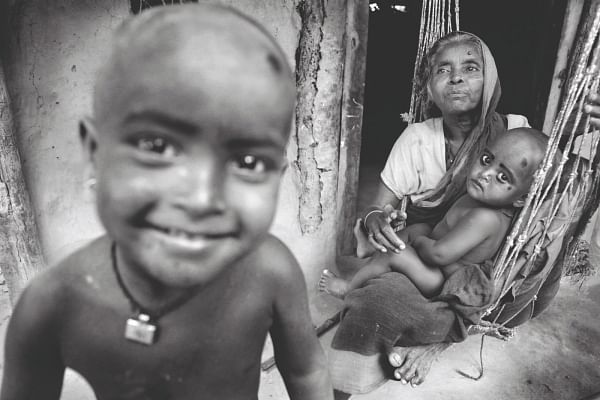 |
Amena Khatun (68) - a widow who has faced several cyclones in her life. Her house was flooded by tide when cyclone Aila hit the coastal belt. Her grown-up son re-built the house all by himself. |
 |
Hazera Khatun (65), a cyclone victim, waits while her house is being re-constructed with “Gol Pata” (Gol leaves). |
There are many shrimp hatcheries run by the powerful and rich. The poor suffer as the shrimp farms increase the salinity of the soil making it unfit for cultivation. |
|
Mohammad Al-amin Islam (10) works at his father's poultry farm in Gabura.
They have been victimised by several cyclones. |
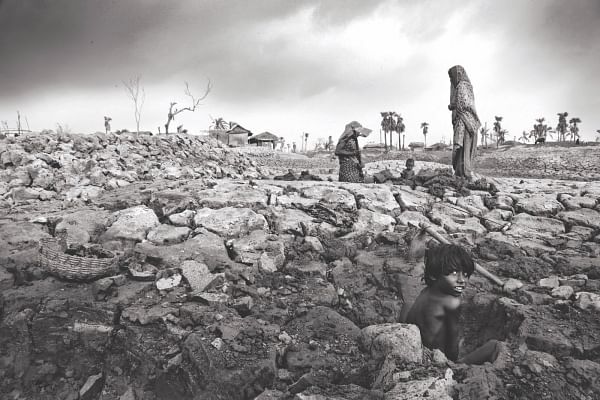 |
After Sidr and Aila, the Sundarbans forest and trees around coastline areas are destroyed. There is a huge fuel crisis in villages; people often dig soil to find tree logs to use as fuel. |
 |
| Elderly people, women and children are the most vulnerable because of climate change. |
A massive environmental disaster. The day Aila struck Gabura Union on May 25, 2009. |
|
There is great crisis of safe drinking water in Gabura.
The only way is to bring
drinking water from nearest
village “Nildumur” which is located on the other side of the river. |
Copyright
(R) thedailystar.net 2011 |






